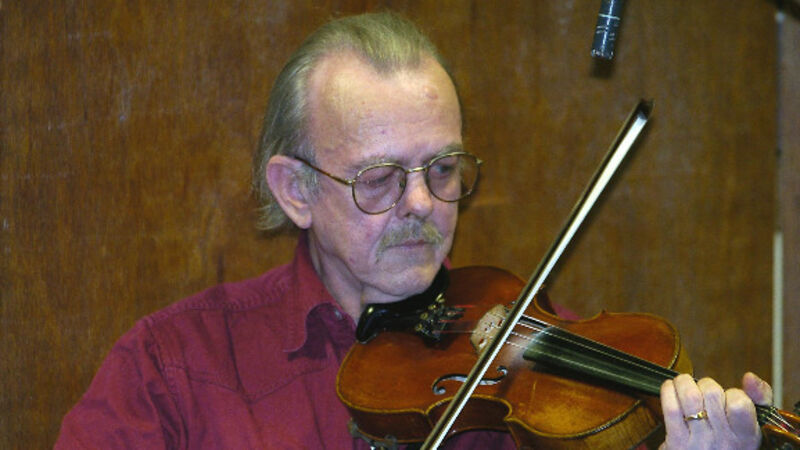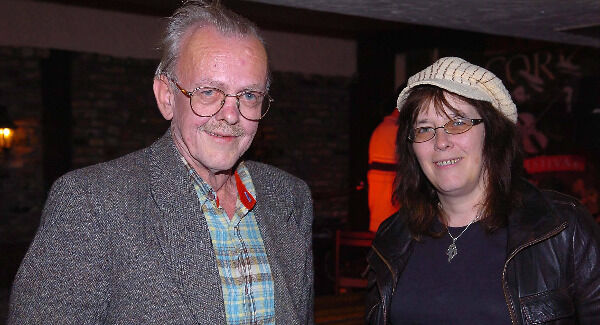Séamus Creagh was a musician who went with the flow

Séamus Creagh was among a community of creatives who flocked to the Hydro baths complex in Blarney in the 1970s, writes .
What would Dr Richard Barter, pioneering developer of western Europe’s first Victorian Roman baths, have made of the commune of artists and musicians that took up residence in the grounds of the crumbling St Ann’s Hydropathic Establishment in the 1970s?
When, in the mid-1800s, Barter opened the Hydro on a hill overlooking Blarney, he could hardly have imagined that the Romanesque entrance pillars, tennis courts, and manicured grounds that graced the world-renowned hotel and health spa would one day provide the aesthetic backdrop for a small but important part of Cork’s musical history.
Though the Turkish baths closed in the 1950s, the houses still standing on the grounds of St Ann’s were rented out by then-owners the Quigley family and the site’s faded grandeur attracted artists of all varieties during Ireland’s swinging ’70s.
They included Kanturk accordion player Jackie Daly, who rented one of the houses, and his musical partner on their self-titled 1977 album, fiddle player and singer Séamus Creagh, who became a regular guest.
“It was an amazing time,” recalls Daly. “The people who owned the land — the Quigleys — were into having artists and musicians there. They had dozens of cottages and they gave them all to musicians and artists for 10 shillings a week.
Maurice Desmond, the well-known artist, the wife and her sister; Flann Fox used to live there, Joe Thoma, and loads of musicians used to come out and visit us. It was a haven for music. It was a magic place. Even though it was the early ’70s it was when the ’60s hit Ireland really. It was like a commune — we all lived in each other’s houses as much as we did in our own.
St Ann’s Hydro also became the home of Belfast flute player and singer Hammy Hamilton, befriended by Creagh and Daly upon his arrival in Cork.
“I first got to know Séamus almost the day and hour I landed in Cork,” says Hamilton. “I came down to Cork in 1976. I was looking for somewhere to stay and at that stage Jackie was living out at the Hydro.
"I ended up getting a room out there and Jackie was living literally a few hundred yards away, so I more or less fell in with that session circuit and Séamus would have been very much a part of that. In ’76 in Cork, Jackie Daly and Séamus Creagh were the big thing.
“I had been doing a masters in ethnomusicology in Belfast and I was writing a thesis about the social anthropology of the session,” he adds. “So I said, I’ll come to Cork for a month and survey the session scene here — and I never went back.”
He completed the masters but never lived in Belfast again. “The Hydro was my first home here.”
Hamilton, Creagh, and Daly all later gravitated towards the Múscraí Gaeltacht, Hamilton establishing a flute-making workshop in Cúil Aodha.
Creagh and Daly, who played a regular gig at the Mills Inn in Baile Mhúirne, were discovered there by Gael Linn, who signed them to record what became the seminal album, Jackie Daly and Séamus Creagh. It secured both the Sliabh Luachra style and the two musicians a central role in the trad revival then in full swing.
Though originally from Westmeath, Creagh’s name became synonymous with the polka and slide dance rhythms of the Cork-Kerry border, a style into which he slipped seemingly effortlessly.
Daly recalls though, how their partnership might have ended before it began: “When I met him first we got on like a house on fire but I told him, I can’t play with you. He said ‘Why not?’
“Well, I said, ‘Your music is perfectly in time but your foot is completely out of time and I can’t play with that’.
He never again stamped his foot. He just packed it up on the spot. It is impossible to play with somebody if their foot is out because it throws you off, but his timing [in his music] was incredibly good, it was beautiful.
Noted too for the beauty of his slow-airs, Creagh possessed another, complementary talent as a singer, his rendition of ‘The Tailor Bán’ being included on the Gael Linn album.
“He was always a fantastic singer,” says Daly. “He could sing a simple song and he’d make the hairs stand up on your head because the feeling was so good.”
While living in Baile Mhúirne, Creagh immersed himself in the area’s singing tradition and songs such as ‘The Beauty Spot Glanlea’ were added to his repertoire, many learned from Muintir Uí Shúilleabháin of Cúil Aodha.
With Daly moving to Galway to join De Dannan, the musical partnership had reached a hiatus by 1978, but Creagh carried the songs and tunes of Cork and Kerry with him on the next stage of his musical voyage — across the Atlantic to Newfoundland.
It was there he met his future second wife, Marie-Annick Desplanques, who says Creagh immediately felt at home amid the area’s traditional music community.

“It was back in July 1988 and I was living in Newfoundland and the folk festival committee were organising a festival called Soiree 88. Many Irish musicians came to this festival and Séamus was one of them,” she says.
“Séamus came as part of the Cork delegation and we met at a concert of a Newfoundland fiddler called Emile Benoit — Séamus recorded some of his tunes later on an album called Came the Dawn.
“He integrated really easily into the Newfoundland music scene and started to play with the band Tickle Harbour. He played with many different people and recorded on many different albums with Newfoundland musicians.”
Through performances, recordings including Tickle Harbour’s ‘The Brule Boys in Paris’, and teaching music, Creagh had a profound impact on Newfoundland’s traditional music scene, such that since his premature death in 2009, the community there has commemorated him with an annual ‘Féile Séamus Creagh’.
“He was a beautiful person and musician,” says Marie-Annick. “In a way, his music reflected his personality.”
She will make her own contribution, along with Daly, Hamilton and a host of musical fellow-travellers, to a celebration of Creagh’s life and work in one of the places that influenced both, at a ‘Séamus Creagh Retrospective’ this Friday in Baile Mhúirne’s Ionad Cultúrtha.
Hamilton, who recorded an album of songs and music, It’s no Secret, with Creagh, and Con Ó Drisceoil, is fear an tí for a night featuring archive film and an exhibition of Marie-Annick’s photographs of Creagh taken over a 20-year period.












